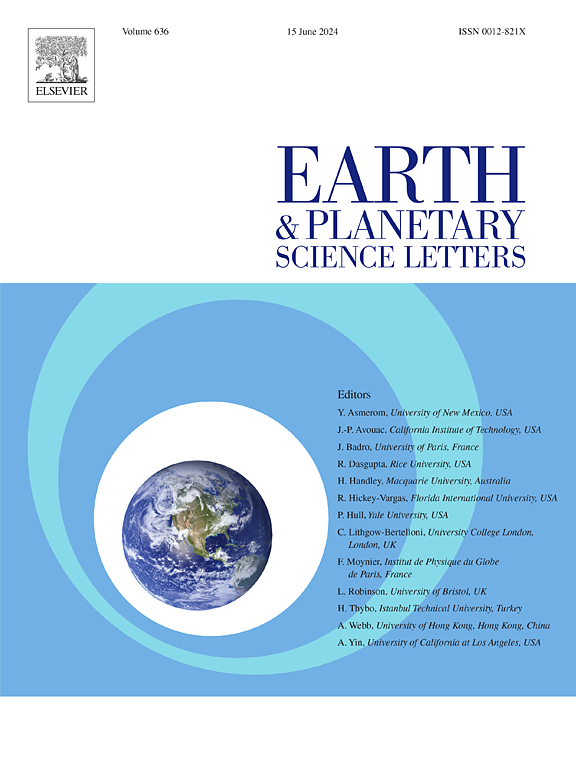Experimental constraints on the shock history of CI chondrites and Ryugu grains
IF 4.8
1区 地球科学
Q1 GEOCHEMISTRY & GEOPHYSICS
引用次数: 0
Abstract
C-type asteroids, which make up a significant portion of the main belt asteroids, are believed to be composed of materials similar to CI and CM carbonaceous chondrites. In this study, we conducted shock recovery experiments on the Orgueil CI and CI affinity Yamato 980115 CY (partly dehydrated CI) chondrites to examine their mineralogical and textural changes under impact conditions. Our results indicate that weak shock pressures below approximately 4 GPa do not produce significant shock metamorphic features, supporting the current interpretation that most Ryugu grains experienced shock pressures within this range. Above approximately 4 GPa, dehydration and degassing of Mg-Fe phyllosilicates and carbonaceous materials become dominant, leading to rock fragmentation along cracks. Rock melting initiates above approximately 10 GPa, leading to the formation of frothy regions composed of iron-rich amorphous material containing numerous small, rounded voids. These voids are generated by the degassing of volatiles (H₂O and CO₂) during shock-induced melting or vitrification. These findings suggest that the regolith layer of asteroid Ryugu was primarily formed by the reassembly of rock fragments exfoliated by impacts without undergoing strong shock metamorphism. However, highly shocked materials may be buried beneath the regolith layer, highlighting the need for further investigations into the interiors of C-type asteroids to better understand their thermal and impact histories.
CI球粒陨石和Ryugu颗粒冲击历史的实验约束
c型小行星占主带小行星的很大一部分,被认为是由类似于CI和CM碳质球粒陨石的物质组成的。在这项研究中,我们对Orgueil CI和CI亲和的Yamato 980115 CY(部分脱水CI)球粒陨石进行了冲击恢复实验,研究了它们在冲击条件下的矿物学和结构变化。我们的研究结果表明,低于约4 GPa的弱冲击压力不会产生显著的冲击变质特征,这支持了目前的解释,即大多数琉球颗粒在此范围内经历了冲击压力。在约4 GPa以上,Mg-Fe层状硅酸盐和碳质物质的脱水脱气起主导作用,导致岩石沿裂隙破碎。岩石在大约10gpa以上开始熔化,导致形成由富含铁的非晶态物质组成的泡沫区域,其中包含许多小而圆的空洞。这些空洞是由在冲击引起的熔化或玻璃化过程中挥发性物质(h2o和CO₂)的脱气产生的。这些发现表明,小行星龙宫的风化层主要是由撞击剥落的岩石碎片重新组合而形成的,没有经历强烈的冲击变质作用。然而,高度受冲击的物质可能被埋在风化层之下,这表明需要进一步研究c型小行星的内部,以更好地了解它们的热历史和撞击历史。
本文章由计算机程序翻译,如有差异,请以英文原文为准。
求助全文
约1分钟内获得全文
求助全文
来源期刊

Earth and Planetary Science Letters
地学-地球化学与地球物理
CiteScore
10.30
自引率
5.70%
发文量
475
审稿时长
2.8 months
期刊介绍:
Earth and Planetary Science Letters (EPSL) is a leading journal for researchers across the entire Earth and planetary sciences community. It publishes concise, exciting, high-impact articles ("Letters") of broad interest. Its focus is on physical and chemical processes, the evolution and general properties of the Earth and planets - from their deep interiors to their atmospheres. EPSL also includes a Frontiers section, featuring invited high-profile synthesis articles by leading experts on timely topics to bring cutting-edge research to the wider community.
 求助内容:
求助内容: 应助结果提醒方式:
应助结果提醒方式:


